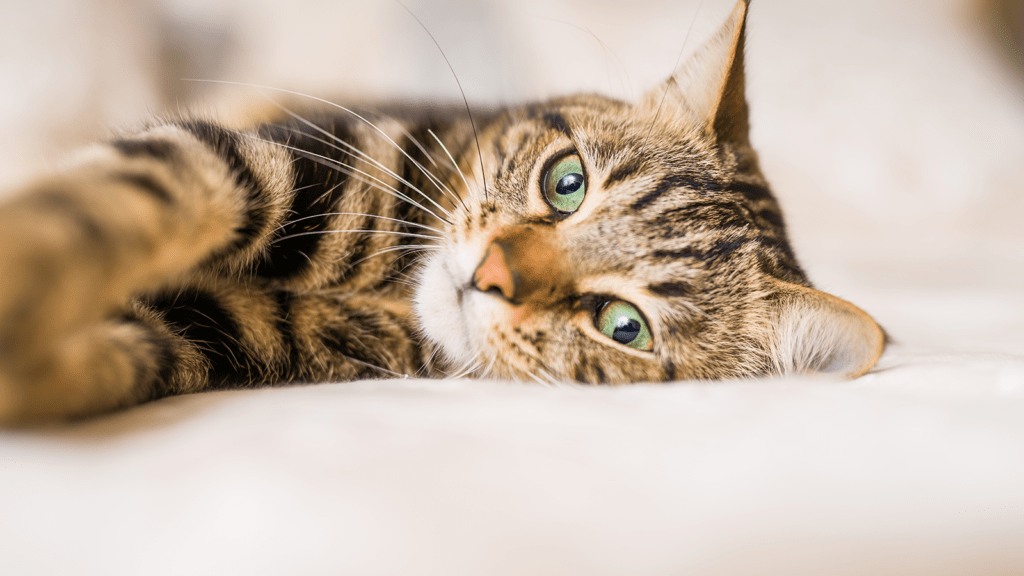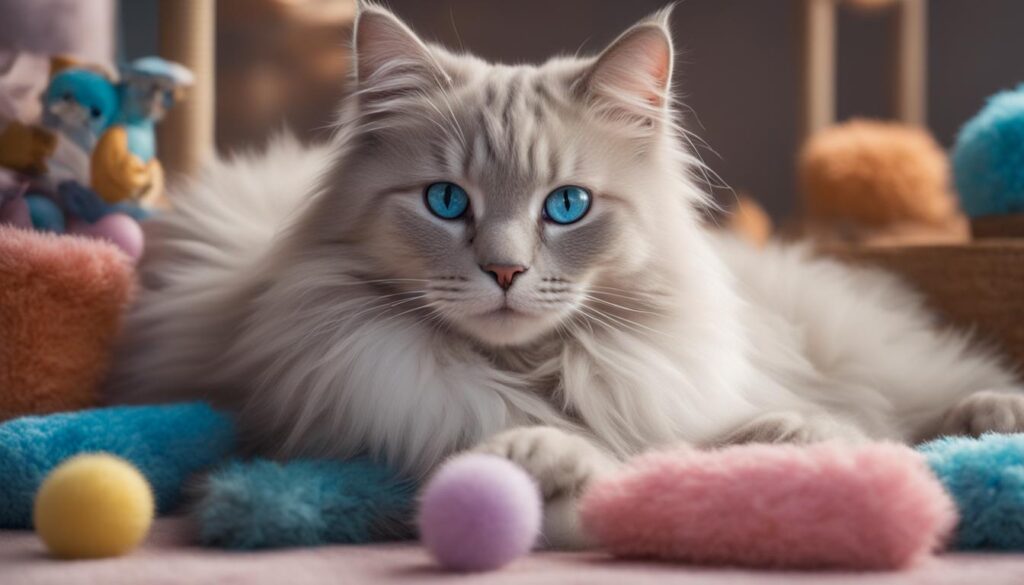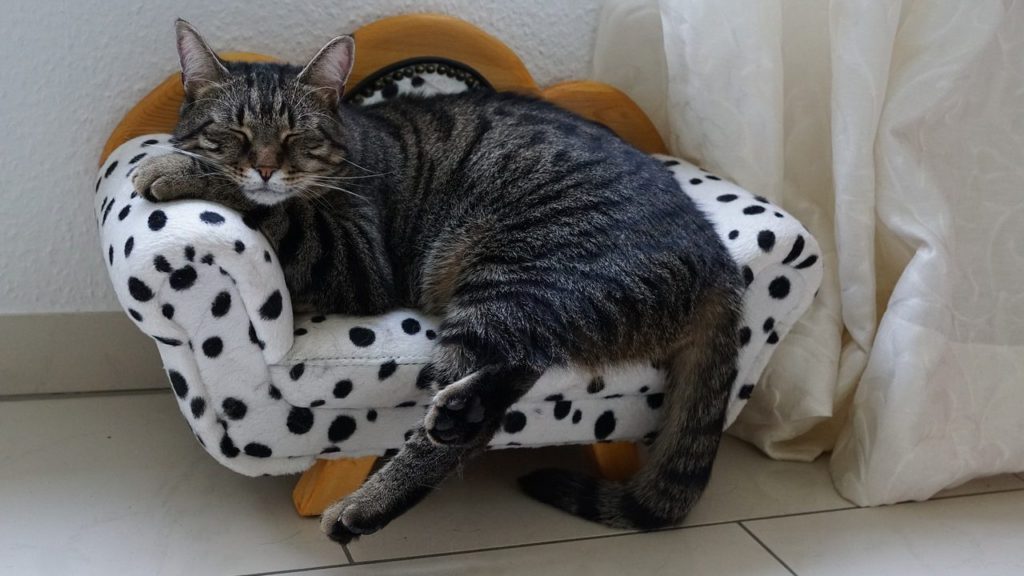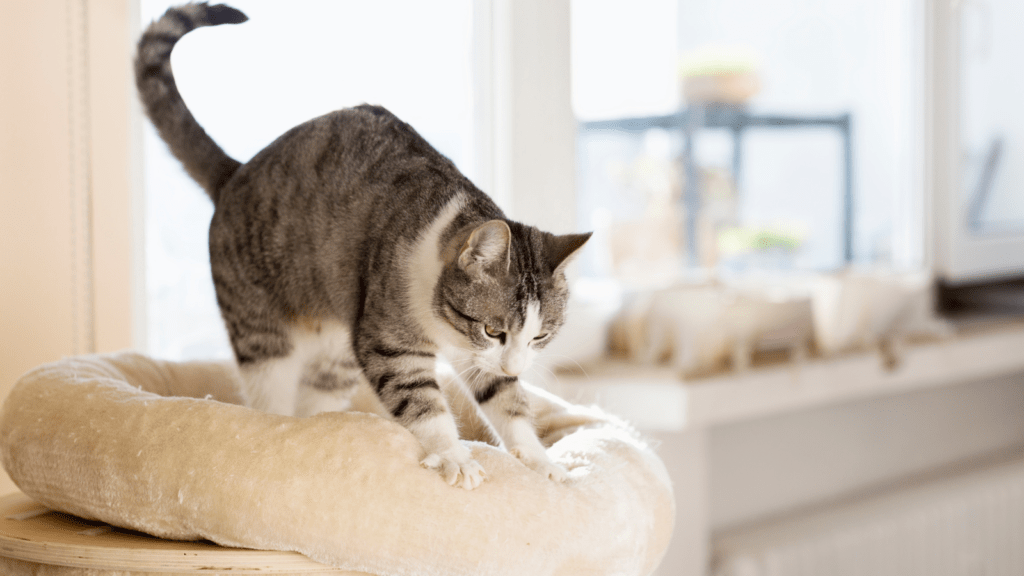
Why Do Cats Make Biscuits?
Have you ever noticed your cat “making biscuits” on a soft blanket, your lap, or even their favorite toy? This adorable behavior, known as kneading, has captivated cat owners for centuries. We’re going to delve into the fascinating world of cat kneading, exploring its origins, purposes, and emotional significance. Prepare to see pictures and videos of cats kneading dough and making biscuits to help us understand our feline friends and answer the question, “why do cats make biscuits?”
The Art of Biscuit-Making: Understanding Cat Kneading
Cat kneading, often referred to as making biscuits, is a rhythmic action where felines press their paws, usually into a soft object, often with purring and a peaceful demeanor. The exact cause of cats kneading remains uncertain; however, some feline experts believe this behavior is inherited from their wild ancestors who would knead grass or foliage to make it softer before lying down. Cats make biscuits for various reasons, including:
- Nursing and nourishment
- Emotional connections
- Territorial tendencies
- Preparing for rest
Felines find soft materials such as blankets, pillows, and even the laps of their owners particularly suitable for kneading. These surfaces remind them of their mother’s warm and fluffy underbellies, which they knead as kittens to stimulate milk flow. Additionally, soft objects often hold scents, such as the scent of their owners, which feline friends find attractive. However, some cats are silly and will make air biscuits, which is particularly adorable.
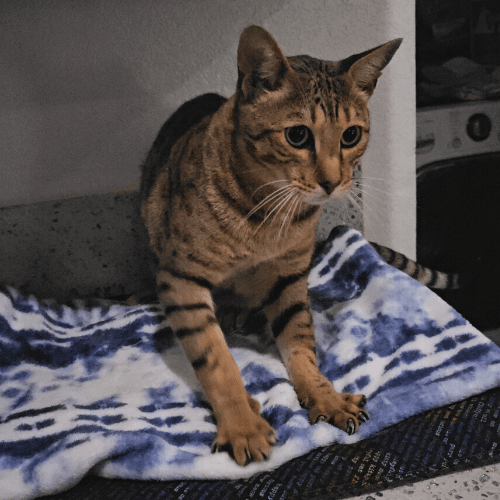
The act of kneading
The process of kneading involves cats rhythmically pressing their paws onto a soft surface, alternately opening and closing them. This repetitive squishing manner is completely normal and is often observed by cat parents, who find it a typical behavior when their feline friends feel content and at ease.
If your cat’s kneading on your lap becomes excessive, it is advisable to gently guide them to a more suitable surface, like a blanket, for their biscuit and dough making. Gently scooch them over to ensure their comfort and protect your skin from their sharp claws.
Cats’ love for soft objects
A cat’s attraction to soft items is not just comforting but also serves a practical purpose. As kittens, they knead their mother’s belly to stimulate milk production, forming a strong bond with her. This behavior continues into adulthood, providing comfort for the cat, often observed before a cat nap.
It’s not uncommon for cats to display kneading behavior on soft objects such as blankets, pillows, and even their owner’s lap, sometimes purring while doing so. This purring indicates their contentment and relaxation in their surroundings, further showcasing their love for soft objects or their favorite person.
The Origins of Biscuit-Making: From Kittens to Adult Cats
Cat kneading behavior starts in kittenhood while nursing, as it stimulates milk flow and promotes bonding with the mama cat. This behavior continues into adulthood for comfort and possible nostalgia, often observed before a cat nap. Both male and female cats may drool while kneading, as though they are salivating in anticipation of milk. This behavior, referred to as the “mommy zone,” is likely a remnant of positive behavior displayed during kittenhood.
The practice of cat biscuit-making, also known as kneading, has its roots in kittenhood. Most cats continue to engage in this activity when they feel content and relaxed, further reinforcing the emotional connection between the cat and its owner or environment.
Nursing and nourishment
The origin of cat biscuit-making, or kneading, is believed to be a reflex stemming from kittens’ instinctive nursing behavior.
For kittens, kneading serves a practical purpose; it assists in acquiring nourishment from the mother cat. By stimulating the production of milk from their mother’s teat, the kitten can consume the vital nutrients needed for growth and development.
As adults, cats continue to engage in this activity when they feel content and relaxed, further emphasizing the connection between kneading and emotional well-being.
Transitioning from kitten to adult
With age, the function of kneading in cats shifts from being a survival instinct to an activity that promotes comfort and emotional bonding. Kneading behavior in adult cats is a way of expressing their contentment and feeling secure in the presence of their owner.
The distinction between kitten and adult biscuit-making is that in kittenhood, kneading stimulates the mother cat’s milk while nursing. Adult cats continue to knead as a behavior associated with comfort and contentment, further solidifying the emotional connection between the cat and its owner or environment.
Emotional Connections: How Kneading Reflects Your Cat’s Feelings
Kneading can be a reflection of a cat’s emotional state, showcasing feelings of contentment, relaxation, and affection towards their surroundings or owner. A kneading cat typically exhibits contentment and relaxation, often accompanied by purring, slow blinking, or drooling.
Cats may knead to bond with their owner, showing affection and trust in their presence. By engaging in this behavior, cats are able to strengthen their emotional connection with their owners, further enriching their relationship and overall well-being.
Contentment and relaxation
A female cat that is kneading is often content and relaxed, sometimes even emitting a soft purr or slowly blinking while doing so. This behavior can be seen as an expression of their fondness and connection with their owners, providing a sense of comfort and security.
Cats demonstrate contentment and relaxation through a repetitive motion of pushing their front paws in and out. If cats purr or slowly blink while kneading, they are likely content and relaxed, further showcasing their emotional connection to their owner or environment.
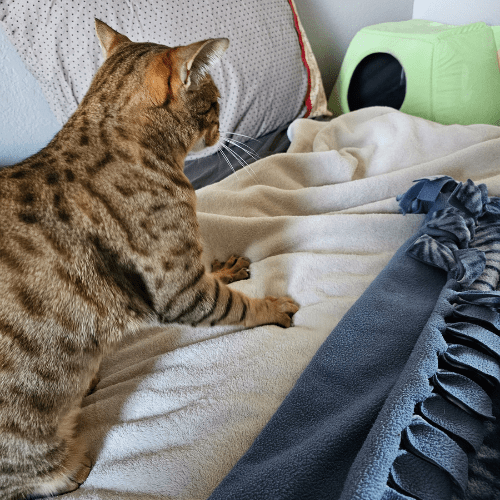
Affection and bonding
Cats use kneading as a cute gesture of affection and trust towards their pet owners, helping to forge a bond. This behavior is an indication of contentment and relaxation, thus demonstrating that the cats trust their owners.
Cats knead their owners in order to establish a bond, utilizing their paws to create a biscuit-like motion. This is indicative of contentment and relaxation and serves as a means of exhibiting trust towards their owners. If a kitty is making biscuits on you, the cat likes you!
My cat is making biscuits on me
When a cat kneads on its owner, it signifies love and trust despite the potential discomfort caused by its claws. This behavior signifies that the cat feels secure in their owner’s presence and is willing to engage in an act that has deep emotional roots for them.
To manage this behavior, owners can provide alternative surfaces for their cat to knead on, such as a folded blanket or a designated kneading pad. This not only protects your face (or skin) but also allows the kitty to engage in a natural cat kneading behavior that brings them comfort and strengthens their bond with their owner.
Territorial Tendencies: Marking Their Space
Cat kneading marks their territory using scent glands in their paws to leave a unique scent on objects and surfaces. This behavior and ancient instinct allow them to claim their space and signal ownership of their space.
Scent glands located in a cat’s paws release pheromones when they knead, marking their territory. By kneading, territory cats claim their space from other cats, dogs, or pets.
Scent glands in paws
When a cat kneads, the scent glands in their paws release pheromones, marking their territory. This marking behavior is essential for cats as it allows them to establish boundaries and maintain a sense of security for their space, like their bed.
Cats’ territorial inclinations when baking biscuits are a result of the scent marking glands located in their paws.
Claiming their space
Cats knead things to stake their claim. Cats making biscuits is a way for them to mark their territory with their scent glands, which are located in their paws.
Offering alternative surfaces for cats to knead on can facilitate the behavior of kneading on appropriate objects, thus protecting your skin or furniture. By providing suitable surfaces for kneading, owners can ensure that their cat’s territorial needs are met while maintaining the safety and integrity of their things.
Preparing for Rest: The Practical Side of Kneading
Making biscuits aids in creating a comfortable and relaxed environment for cats before sleep. This practical purpose of dough making is beneficial for both domestic cats and their wild ancestors, who would soften grass or foliage before lying down.
Cats usually only knead on soft surfaces when preparing for a nap, ensuring that their sleeping area is comfortable and inviting. Cat kneading not only provides them with a sense of security but also allows them to engage in a natural and instinctual behavior that brings them comfort.
Softening their bed
Inheriting a behavior from their wild ancestors, domestic cats knead to create a comfortable sleeping surface, just like how their ancestors softened grass or foliage before resting. This practical aspect of dough making allows cats to ensure that their sleeping area is soft and comfortable, promoting a sense of well-being and security.
Providing a soft surface, such as a blanket or cushion, can encourage cats to knead and soften their bed before resting. This not only promotes their comfort but also helps them to engage in a natural behavior that is essential for their overall well-being.
Checking for safety
Cats knead to ensure their sleeping area is free from potential dangers or discomforts, ensuring a safe and comfortable rest. By engaging in this behavior, cats can detect any unseen hazards or discomforts, ensuring that their sleeping area is safe and inviting.
Offering a soft surface, such as a blanket or cushion, can encourage cats to knead and check for safety before resting.
Caring for Your Cat’s Claws: Tips for Managing Kneading Behavior
Handling your cat’s kneading behavior can include regular nail grooming and introducing alternative surfaces for kneading, safeguarding their comfort and your belongings. Trimming your cat’s nails can help prevent injury or damage to belongings while they make biscuits. Offering alternative scratching surfaces can help keep your cat’s nails trimmed.
Nail trimming
Regularly trimming your cat’s nails can prevent potential injuries or damage to belongings during kneading. Here’s our guide for how to trim your cat’s nails.
Aside from maintaining your cat’s comfort, getting your cat’s nails trimmed regularly can also protect your skin and things from scratches during your cat’s kneading sessions. By keeping their nails well-groomed, you can minimize any discomfort or scratching during kneading, allowing both you and your cat to enjoy the adorable bonding experience.
Providing alternative surfaces
Providing alternate kneading surfaces like a super soft blanket or a designated mat can shield your lap or other surfaces from their claws. This not only ensures the comfort of pet parents but also allows their pets to engage in a natural behavior that brings them contentment and strengthens their bond with you.
By providing suitable outlets for kneading behavior, you can effectively manage it while still allowing your cat to express their emotions and instincts in a healthy manner.
Kneading Dough And Making Biscuits
Cat kneading, or making biscuits, is a fascinating and multifaceted behavior that serves various purposes, from emotional bonding to territorial marking. By understanding the reasons behind this behavior, you can better cater to your cat’s needs and ensure a comfortable and harmonious relationship with your feline friend. So, the next time you see your cat making biscuits, take a moment to appreciate the complexity of their world and the depth of their connection with you.

